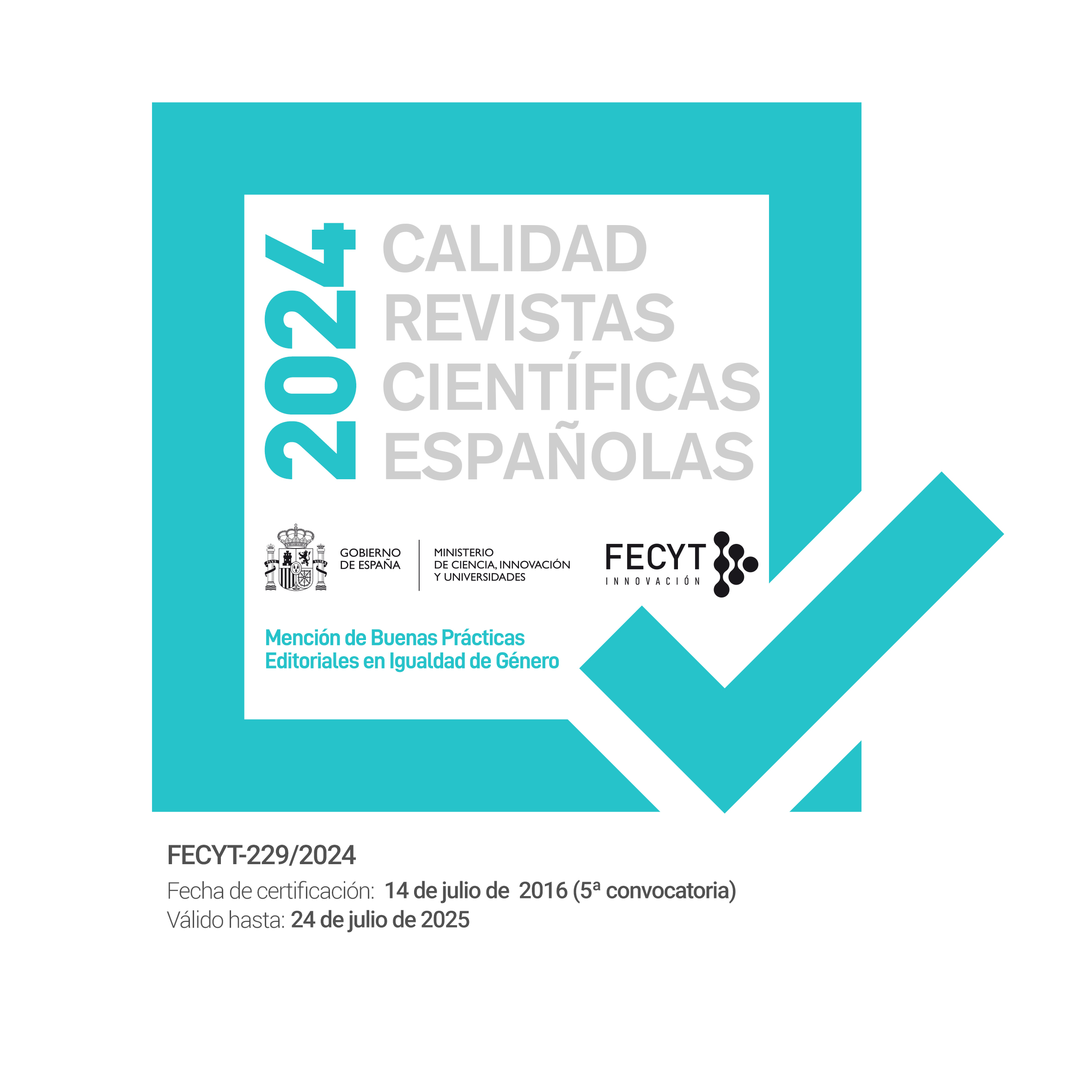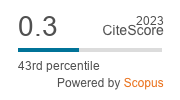The increasing incidence of China in South America in the new millennium: what to expect in the future?
Keywords:
China, South America, Golden Decade, dependence, natural resourcesAbstract
This article discusses the main challenges of China’s growing presence in South America in the economic and commercial field. While the sharp increase of the Chinese FDI since 2010 and the Asian country’s increased demand for natural resources, especially hydrocarbons and minerals, generated a boom period known as the “Golden Decade” (2003-2013), the challenges that these processes have generated in the Southern Cone should not be ignored. The main conclusion of this research indicates that the economic and commercial relationship with China has strengthened several structural paradoxes in the region, such as dependence on natural resources, socio-environmental impact, and the concentration of land tenure in favor of Chinese capital. The documentation used comes mainly from the Ministry of Foreign Affairs of Chile (Minrech).References
ALLARD, Raúl (2009). La globalización por dentro: el estado-nación y los actores transnacionales. Santiago de Chile: Catalonia.
AUTY, Richard (2002). Sustaining development in mineral economies: the resource curse thesis. Londres: Routledge.
BADIA-MIRÓ, Marc; PINILLA, Vicente, y WILLEBALD, Henry (2015). Natural resources and economic growth: learning from history. Nueva York: Routledge.
BARBOSA, Luiz (2015). Guardians of the brazilian amazon rainforest: environmental organizations and development. Nueva York: Routledge.
BOSCHINI, Anne; PETTERSSON, Jan, y ROINE, Jesper (2007). «Resource curse or not: a question of appropriability». Scandinavian Journal of Economics, Estocolmo, vol. 109, núm. 3, págs. 593-617.
BRUNNSCHWEILER, Christa, y BULTE, Erwin (2008). «The resource curse revisited and revised: a tale of paradoxes and red herrings». Journal of Environmental Economics and Management, Atlanta, núm. 55, págs. 248-264.
CHEN, Taotao, y PÉREZ, Miguel (2014). Chinese foreign direct investment in Latin America and the Caribbean. Santiago de Chile: CEPAL.
CUI, Shoujun, y PÉREZ, Manuel (2016). China and Latin America in transition: policy dynamics, economic commitments and social impacts. Nueva York: Springer.
ELLIS, Evan (2014). China on the ground in Latin America: challenges for the chinese and impacts on the region. Nueva York: Palgrave Macmillan.
ESCUDERO, Manuel, y GARCÍA, Jessica (2014). La responsabilidad social empresarial y la creación de valor en América Latina. Bilbao: Universidad de Deusto.
FRANKEL, Jeffrey (2012). «The natural resource curse: a survey of diagnoses and some prescriptions». HKS Faculty Research Working Paper Series RWP12-014. Cambridge: John Fitzgerald Kennedy School of Government, Harvard University, págs. 1-29.
GALLAGHER, Kevin (2016). The China triangle: Latin America’s China boom and the fate of the Washington Consensus. Oxford: Oxford University Press.
GÓMEZ, Sergio (2012). The land market in Latin America and the Caribbean: concentration and foreignization. Santiago de Chile: FAO.
GUELAR, Diego (2013). La invasión silenciosa: El desembarco chino en América del Sur. Buenos Aires: Penguin Random House.
HUMPHREYS, Macartan; SACHS, Jeffrey, y STIGLITZ, Joseph (2007). «What is the problem with natural resource wealth?». En: HUMPHREYS, M.; SACHS, J., y STIGLITZ, J. (coords.). Escaping the resource curse. Nueva York: Columbia University Press, págs. 1-20.
LANXIN, Xiang (2008). «An alternative chinese view». En: ROETT, R., y PAZ, Guadalupe (coord.). China’s expansion into the western hemisphere: implications for Latin America and the United States. Washington: Brookings Institution Press, págs. 59-76.
LOVEJOY, Thomas (2006). Climate change and biodiversity. Nueva Delhi: The Energy and Resources Institute.
MACHINEA, José (2010). La crisis económica en América Latina: alcances e impactos. Madrid: Siglo XXI.
MEHLUM, Halvor; MOENE, Karl, y TORVIK, Ragnar (2006). «Institutions and the resource curse». The Economic Journal, Hoboken, vol. 116, págs. 1-20.
MYERS, Margaret, y WISE, Carol (2016). The political economy of China-Latin America relations in the new millennium: brave new world. Nueva York: Routledge.
OCAMPO, José (2015). «Los retos del desarrollo latinoamericano a la luz de la historia». Cuadernos de Economía, Bogotá, vol. 34, núm. 66, págs. 479-506.
PARDO, Mercedes (2002). La evaluación del impacto ambiental y social para el siglo XXI: teorías, procesos, metodología. Madrid: Fundamentos.
PETKOVA, Elena; LARSON, Anne, y PACHECO, Pablo (2011). Gobernanza forestal y REDD+: Desafíos para las políticas y mercados en América Latina. Bogor: Center for International Forestry Research.
PINTO, Honorio (2011). «Shougang Hierro Perú S.A.A.: problema laboral 1993-2010». Investigaciones Sociales, Lima, vol. 15, núm. 27, págs. 369-389.
RAY, Rebecca; GALLAGHER, Kevin; LÓPEZ, Andrés, y SANBORN, Cynthia (2015). China in Latin America: lessons for south-south cooperation and sustainable development. Boston: Global Economic Governance Initiative of Boston University.
RIEFF, David (2016). El oprobio del hambre: alimentos, justicia y dinero en el siglo XXI. Madrid: Penguin Random House.
ROBINSON, James; TORVIK, Ragnar, y VERDIER, Thierry (2006). «Political foundations of the resource curse». Journal of Development Economics, Atlanta, vol. 79, págs. 447-468.
ROSS, Michael (2004). «What do we know about natural resources and civil war?». Journal of Peace Research, Oslo, vol. 41, núm. 3, págs. 337-356.
SACHS, Jeffrey, y WARNER, Andrew (1995). «Natural resource abundance and economic growth». NBER Working Paper, Cambridge, núm. 5398, págs. 1-54.
SANBORN, Cynthia; RAY, Rebecca, y GALLAGHER, Kevin (2017). China and sustainable development in Latin America: the social and environmental dimension. Cambridge: Anthem Press.
STIGLITZ, Joseph (2005). «Making natural resources into a blessing rather than a curse». En: SCHIFFRIN, A., y SVETLANA, A. (eds.). Covering oil: a reporter’s guide to energy and development. Nueva York: Open Society Institute, págs. 13-19.
SVAMPA, Maristella (2013). «Consenso de los Commodities y lenguajes de valoración en América Latina». Revista Nueva Sociedad, Buenos Aires, núm. 244, págs. 31-46.
VIALE, Enrique, y SVAMPA, Maristella (2015). Maldesarrollo: La Argentina del extractivismo y el despojo. Buenos Aires: Katz.
VIDAL, Gregorio, y NAVEIRO, Omar (2010). América Latina: democracia, economía y desarrollo social. Madrid: Trama.
WEIBEL, Mauricio (2016). Traición a la patria: «Milicogate». El millonario desfalco de la Ley del Cobre: la historia oculta de la corrupción en el Ejército de Chile. Santiago de Chile: Penguin Random House.
YÁÑEZ, Nancy, y MOLINA, Raúl (2008). La gran minería y los derechos indígenas en el norte de Chile. Santiago de Chile: Lom.
Downloads
Published
Issue
Section
License
The author publishing in this journal agrees to the following terms.
a. Author retains the copyright and grants the journal the right of first publication of the work.
b. Texts will be disseminated under the Creative Commons Attribution-NonCommercial-NoDerivative licence, which allows the work to be shared with third parties, provided that they acknowledge authorship, their initial publication in this journal, and the terms of the licence. It is not permitted to make commercial use of the work nor to distribute derivative works without the copyright holder's explicit permission.





